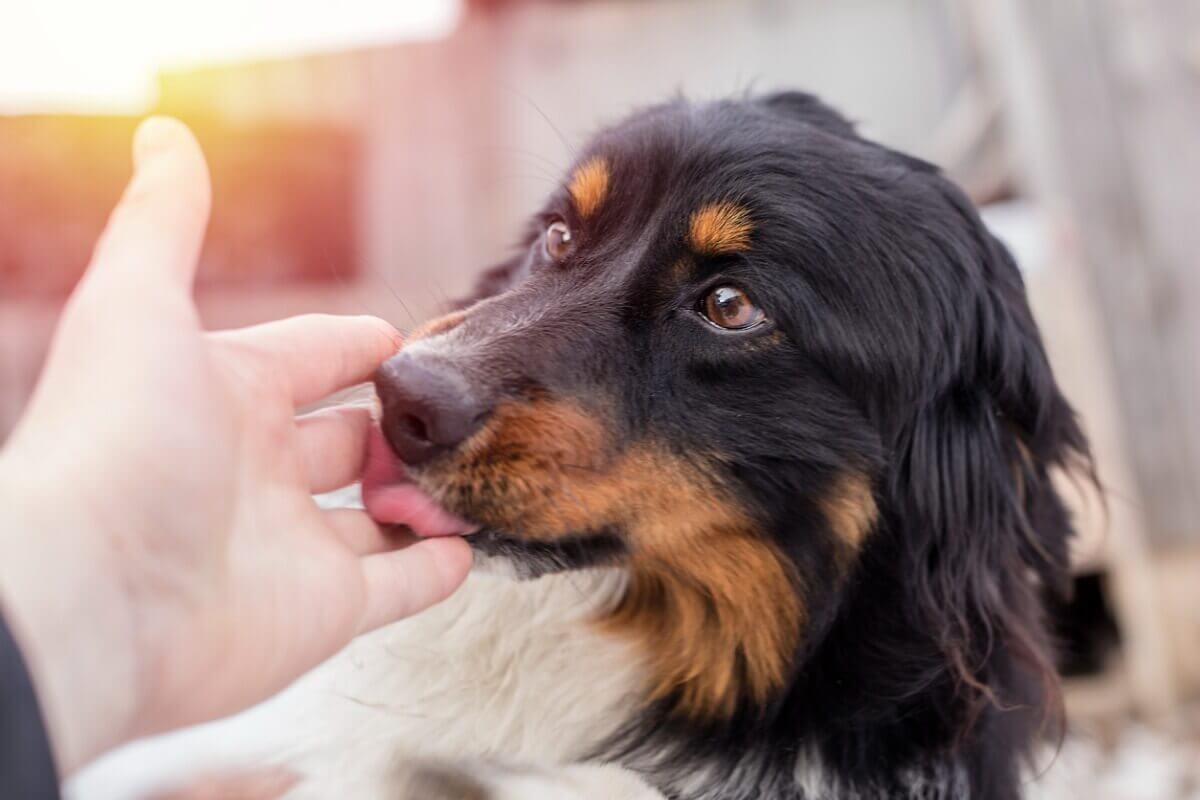9 Tips to Extend the Life of Your Dog

Life expectancy is not the same for all dogs. Factors such as breed, size, or the tendency to suffer from certain diseases mark differences of years in the longevity of canines. However, in this article, you’ll find tips on how to extend the life of your dog, whatever their genetics, race, or health status may be.
Surely, if you share your life with one of these animals, you want it to live for many years. By following these general guidelines, you’ll not only achieve this goal, but you’ll also ensure that your companion will be in perfect health. Keep reading.
9 Tips to Extend the Life of Your Dog
The recommendations you’ll read below may seem obvious, but complying with all of them on a daily basis requires several simultaneous efforts by owners that are sometimes exhausting. However, the result will be an optimal quality of life and will prolong the longevity of your animal, so don’t miss what comes next.

1. Choose mixed breeds
If you’re considering adopting a dog and want it to spend many years by your side, choose a mixed breed. The diseases that affect pure breeds are the result of artificial genetic selection, so they’re less frequent in those dogs that have been crossed naturally.
Mixed-breed dogs are free of problems that other purebred dogs do suffer from in many cases. For example, golden retriever purebreds are prone to cancer and pugs tend to have respiratory problems due to their brachycephaly. This doesn’t mean that a mutt’s immune to all pathologies, but it does mean that it’s less vulnerable.
Small dogs tend to live longer than large dogs, as long as they’re healthy.
2. A good diet is the key
A dog that eats well is a healthy animal in almost all cases. The strength of the immune system depends on good nutrition, as well as good tissue structure and proper organ function.
On the other hand, dogs with obesity live shorter lives than those who are at their ideal weight. Make sure that the food and supplements you give your dog are the best: Spending more on quality foods will always be cheaper than veterinary treatments.
Obesity promotes conditions such as cancer, cardiovascular problems, metabolic disorders, and chronic gastrointestinal disorders.
3. Exercise
Daily exercise is as important as a balanced diet. Your dog will benefit from being active and will live longer as exercise will strengthen its cardiovascular system, reduce stress, and prevent musculoskeletal problems.
Exercise for the mind is also necessary but often forgotten. Games, socialization with other dogs, and training are ways to exercise your dog’s mind and prevent diseases such as dementia and anxiety disorders.
In addition, a mentally balanced dog will have an easier time establishing a healthy and solid bond with its guardian. This also adds to their quality of life.
4. Neuter your dog
Neutering a dog doesn’t make any difference to the health of the animal, but it’s the most effective method of preventing tumors and cancers in the reproductive system. To give you an idea, 80% of unspayed males suffer from benign prostatic hyperplasia when they reach old age.
Neutering prevents the appearance of cancers derived from the hormonal activity of the gonads (such as uterine, mammary, or testicular cancer).
5. Take your dog for regular checkups
Many diseases don’t show up with visible signs until they’ve advanced to a worrisome stage. But they do show up in tests such as blood tests, ultrasounds, and manual exams. That’s why it’s important to attend annual checkups with your dog and stay ahead of any health setbacks.
In addition, if any aspect of the animal’s care needs to be improved, your vet will give you instructions on how to go about it.
6. Create a safe space for them
Home accidents are more common than you think. In the end, your dog destroying a sock can be annoying–but if it swallows the sock, your pet’s very likely to need to go for emergency surgery.
So, prepare your home to make it a safe environment. The measures to take will depend on the animals that live with you; for example, if your dog tends to chew and swallow socks, always keep textiles in a drawer out of reach.
7. Avoid stress
Stress shortens life. It happens with humans, dogs, and many other animals because the organisms aren’t prepared to withstand the physical and chemical correlates of stress for a continuous time.
Try to keep this condition at a minimum in your home, as it will affect your dog negatively (and you too). Arguments, continuous noise, strong smells, and other factors are common causes of stress for dogs.
8. Have vaccinations and deworming up to date
Keeping your dog properly vaccinated and dewormed not only extends their life through disease prevention but also protects other dogs in the environment. In other words, vaccines are a firewall against the spread of epidemics.
9. Maintain good hygiene
Hygiene, both of the dog itself and its environment, is essential to ensure good health. Remember to bathe it every so often, cut its nails, brush its coat, and brush its teeth. Your dog’s bed, toys, and clothes should also be washed and disinfected regularly.

As you’ve seen with these tips to extend the life of your dog, they’re all simple actions that are within the reach of any guardian. The only effort you’ll have to make is to create a care routine that includes all these factors. But the result will be spectacular: A happy, healthy, and enjoyable dog for many years to come.
All cited sources were thoroughly reviewed by our team to ensure their quality, reliability, currency, and validity. The bibliography of this article was considered reliable and of academic or scientific accuracy.
- Bellumori, T. P., Famula, T. R., Bannasch, D. L., Belanger, J. M., & Oberbauer, A. M. (2013). Prevalence of inherited disorders among mixed-breed and purebred dogs: 27,254 cases (1995–2010). Journal of the American Veterinary Medical Association, 242(11), 1549-1555.
- Proschowsky, H. F., Rugbjerg, H., & Ersbøll, A. K. (2003). Mortality of purebred and mixed-breed dogs in Denmark. Preventive veterinary medicine, 58(1-2), 63-74.
- Gossellin, J., Wren, J. A., & Sunderland, S. J. (2007). Canine obesity–an overview. Journal of veterinary pharmacology and therapeutics, 30, 1-10.
- Speakman, J. R., & Selman, C. (2011). The free‐radical damage theory: accumulating evidence against a simple link of oxidative stress to ageing and lifespan. Bioessays, 33(4), 255-259.